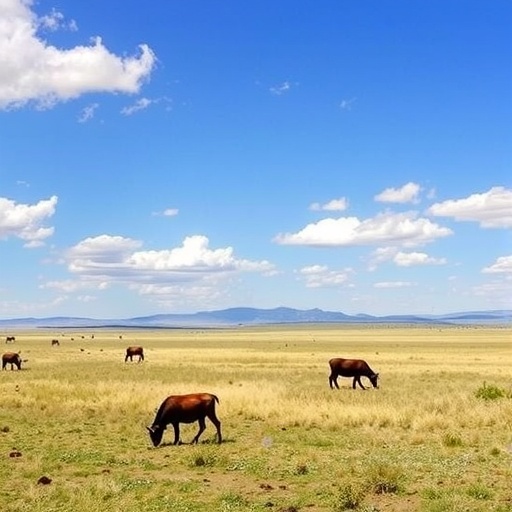UCSC acquires 414 acres for conservation, farming in major land deal – Lookout Santa Cruz

UC Santa Cruz Land Acquisition Advances Key Sustainable Development Goals
Executive Summary
The University of California Santa Cruz (UCSC) has announced a significant expansion through the acquisition of two properties totaling over 400 acres. This strategic initiative is poised to substantially advance the university’s contributions to several United Nations Sustainable Development Goals (SDGs), particularly in the areas of quality education, sustainable agriculture, and environmental conservation. The acquisition includes a protected natural reserve and an oceanfront parcel for agricultural research, both of which will serve as living laboratories for students and researchers.
Details of the Acquired Properties
The acquisition, facilitated through a partnership with the Younger family and The Conservation Fund, involves two distinct parcels of land:
- Protected Natural Land: A 214-acre parcel of environmentally sensitive land adjacent to the main UCSC campus. This property will be permanently protected from development and managed by the UC Santa Cruz Campus Natural Reserves.
- Coastal Farmland: A 200-acre oceanfront property near the Seymour Marine Discovery Center. This land will be managed by the university’s Center for Agroecology to pioneer sustainable agricultural practices.
Alignment with Sustainable Development Goals (SDGs)
This initiative directly supports UCSC’s commitment to the global sustainability agenda. The project’s impact can be mapped across several key SDGs:
- SDG 4: Quality Education: The properties will provide transformative hands-on learning opportunities. Students will engage in field internships, wildlife conservation studies, and the development of new sustainable agricultural technologies, directly enhancing the quality and relevance of their education.
- SDG 15: Life on Land: The permanent protection of the 214-acre natural reserve is a direct contribution to conserving terrestrial ecosystems. This action protects species-rich undeveloped land, preserving biodiversity and natural habitats in line with SDG 15 targets.
- SDG 2: Zero Hunger & SDG 12: Responsible Consumption and Production: The coastal farm will be a hub for research into sustainable food systems. By expanding the university’s capacity for agroecological research, UCSC will help develop methods for sustainably growing healthy food, contributing to regional food security and promoting sustainable production patterns.
- SDG 14: Life Below Water: The coastal farm’s proximity to the marine environment presents a unique opportunity for research on the intersection of agriculture and marine health. Studies can focus on minimizing agricultural runoff and protecting coastal ecosystems.
- SDG 17: Partnerships for the Goals: The acquisition is a model of a multi-stakeholder partnership, involving the university, a private family, a non-profit conservation organization, and various funding sources. This collaboration exemplifies the cooperative approach needed to achieve sustainable development.
Strategic Vision and Future Impact
University leadership has described the acquisition as transformative. Chancellor Cindy Larive stated that the initiative will “protect species-rich undeveloped natural lands, provide our students with transformational hands-on learning opportunities, and expand the university’s research to help farmers sustainably grow healthy food for the region and beyond.”
Darryl Wong, Executive Director of the Center for Agroecology, noted the immense potential for innovative programming on the new coastal farmland, which offers a different environmental context compared to the university’s existing farm. The land acquisition builds on the university’s legacy as a leader in organic farming and expands its capacity to address critical global challenges related to food, climate, and conservation.
Analysis of Sustainable Development Goals in the Article
1. Which SDGs are addressed or connected to the issues highlighted in the article?
The article highlights issues and initiatives that are directly connected to several Sustainable Development Goals (SDGs). The acquisition of land for conservation, sustainable agriculture, research, and education touches upon goals related to food security, education, environmental protection, and partnerships.
- SDG 2: Zero Hunger: This goal is addressed through the university’s plan to use the 200-acre coastal property for sustainable agriculture. The article mentions the land will be managed by the Center for Agroecology and will be used to “expand the university’s research to help farmers sustainably grow healthy food for the region and beyond.”
- SDG 4: Quality Education: The article emphasizes that the land acquisition is a “major boost for student research and hands-on learning.” It repeatedly mentions that students will engage in “transformational hands-on learning opportunities,” “field internships,” and use the land as an “outdoor classroom space,” which directly contributes to providing quality education and practical skills.
- SDG 15: Life on Land: This goal is central to the acquisition of the 214-acre property adjacent to the main campus. The article states this land is “environmentally sensitive,” will be “permanently protected from the development,” and the initiative aims to “protect species-rich undeveloped natural lands.” This aligns with the goal of conserving terrestrial ecosystems and biodiversity.
- SDG 17: Partnerships for the Goals: The entire initiative is a result of a multi-stakeholder partnership. The article details that UC Santa Cruz worked with “The Conservation Fund” and the “Younger family” to transfer the properties, utilizing “philanthropic, private and public grants.” This collaboration between a public university, a private family, and a non-profit organization exemplifies the spirit of SDG 17.
2. What specific targets under those SDGs can be identified based on the article’s content?
Based on the specific actions described in the article, the following SDG targets can be identified:
- Target 2.4 (under SDG 2): “By 2030, ensure sustainable food production systems and implement resilient agricultural practices…” The university’s plan to use the coastal farm for “testing new technologies for sustainable agriculture” and expanding research to “help farmers sustainably grow healthy food” directly supports the implementation of sustainable agricultural practices.
- Target 4.7 (under SDG 4): “By 2030, ensure that all learners acquire the knowledge and skills needed to promote sustainable development…” The article’s focus on providing students with “transformational hands-on learning opportunities” in conservation and sustainable agriculture is a direct effort to equip them with the necessary knowledge and skills for promoting sustainable development.
- Target 15.1 (under SDG 15): “By 2020, ensure the conservation, restoration and sustainable use of terrestrial and inland freshwater ecosystems and their services…” The acquisition and permanent protection of “214 acres of environmentally sensitive land” is a direct action towards the conservation of terrestrial ecosystems. The article explicitly states the land will be managed by the UC Santa Cruz Campus Natural Reserves and protected from development.
- Target 17.17 (under SDG 17): “Encourage and promote effective public, public-private and civil society partnerships…” The collaboration between UC Santa Cruz (a public entity), the Younger family (private citizens), and The Conservation Fund (a civil society non-profit) to achieve conservation and educational goals is a clear example of the multi-stakeholder partnerships this target aims to promote.
3. Are there any indicators mentioned or implied in the article that can be used to measure progress towards the identified targets?
The article provides both explicit and implicit indicators that can be used to measure progress:
-
For SDG 2 (Target 2.4):
- Indicator: The area of agricultural land under productive and sustainable agriculture.
- From the article: The article explicitly mentions the acquisition of “about 200 acres of oceanfront farmland” that will be used for sustainable agriculture research and practice. This acreage is a direct quantitative indicator.
-
For SDG 4 (Target 4.7):
- Indicator: The number of students participating in educational programs on sustainable development.
- From the article: While not giving a specific number, the article implies this indicator by stating that “Students will participate in hands-on learning activities on the coastal farm, from field internships and wildlife conservation… to testing new technologies.” Progress could be measured by tracking the number of students involved in these programs.
-
For SDG 15 (Target 15.1):
- Indicator: Proportion of important sites for terrestrial biodiversity that are covered by protected areas (related to Indicator 15.1.2).
- From the article: The article provides a precise quantitative measure: “214 acres of environmentally sensitive land” will be “permanently protected.” This acreage serves as a direct indicator of progress in land conservation.
-
For SDG 17 (Target 17.17):
- Indicator: The number of multi-stakeholder partnerships for sustainable development.
- From the article: The article describes one significant partnership involving three distinct types of stakeholders: a public university (UCSC), a private family (the Youngers), and a non-profit organization (The Conservation Fund). This collaboration itself serves as an indicator of a successful partnership.
4. Summary Table of SDGs, Targets, and Indicators
| SDGs | Targets | Indicators Identified in the Article |
|---|---|---|
| SDG 2: Zero Hunger | Target 2.4: Ensure sustainable food production systems and implement resilient agricultural practices. | The acquisition of “about 200 acres of oceanfront farmland” to be used for sustainable agriculture. |
| SDG 4: Quality Education | Target 4.7: Ensure all learners acquire the knowledge and skills needed to promote sustainable development. | Provision of “hands-on learning opportunities” and “field internships” for students in conservation and sustainable agriculture. |
| SDG 15: Life on Land | Target 15.1: Ensure the conservation and sustainable use of terrestrial ecosystems. | The permanent protection of “214 acres of environmentally sensitive land” from development. |
| SDG 17: Partnerships for the Goals | Target 17.17: Encourage and promote effective public, public-private and civil society partnerships. | The successful collaboration between UC Santa Cruz, The Conservation Fund, and the Younger family, funded by public and private grants. |
Source: lookout.co

What is Your Reaction?
 Like
0
Like
0
 Dislike
0
Dislike
0
 Love
0
Love
0
 Funny
0
Funny
0
 Angry
0
Angry
0
 Sad
0
Sad
0
 Wow
0
Wow
0














































.jpg.webp?itok=0ZsAnae9#)







:focal(1500,1000)/https://media.globalcitizen.org/a6/9a/a69a4720-d8a1-4715-b596-18738d03c05c/rotary_polio_hero_image.jpg?#)

/countries/sri-lanka/photo-credit---dmc-sri-lanka.tmb-1200v.jpg?sfvrsn=dc298bcc_1#)


















